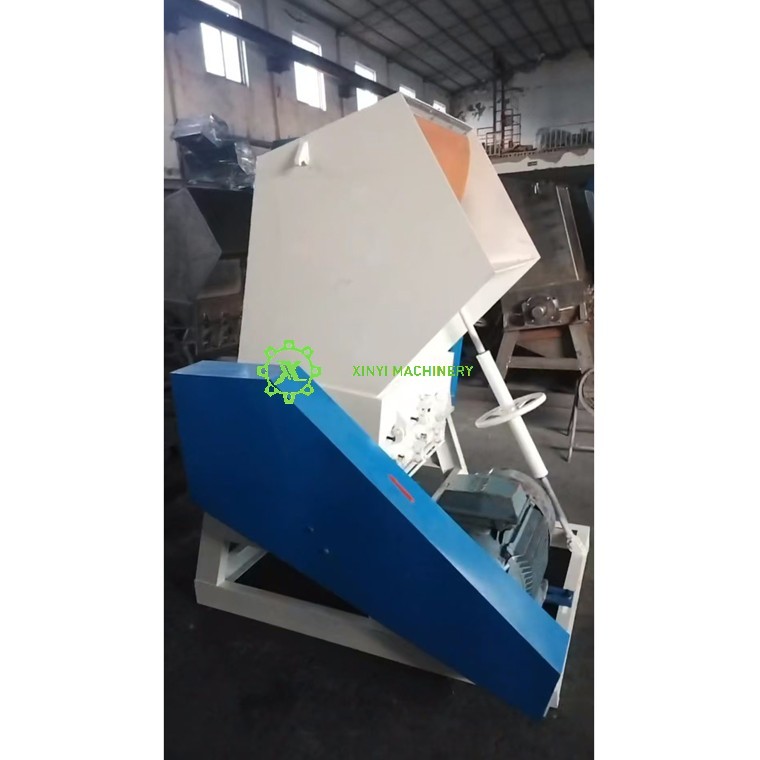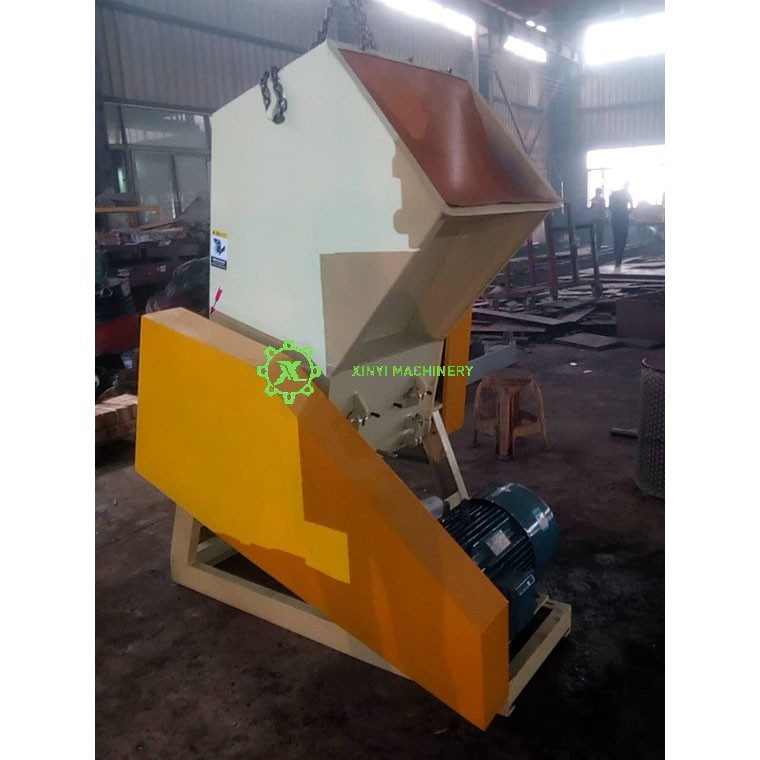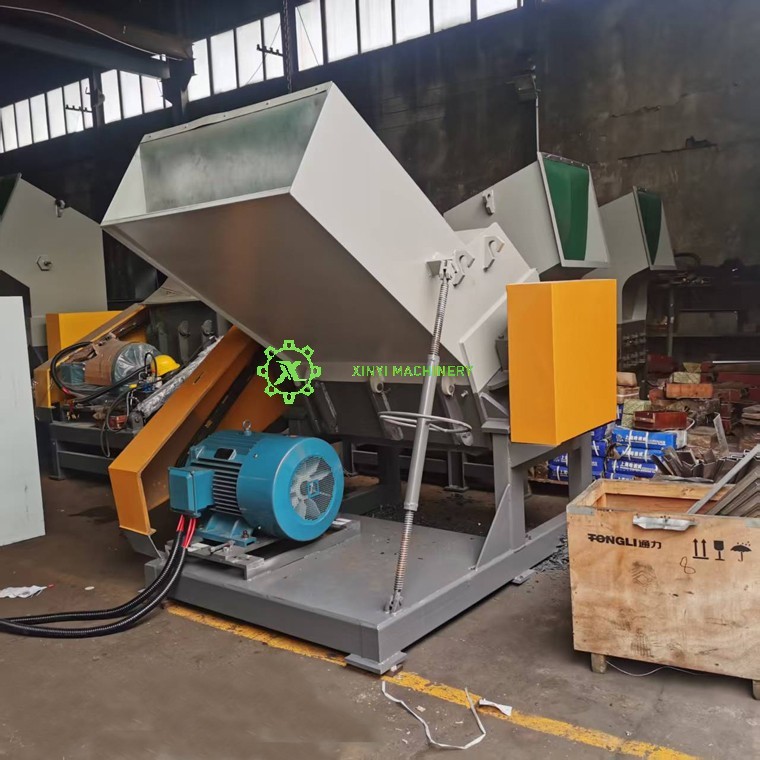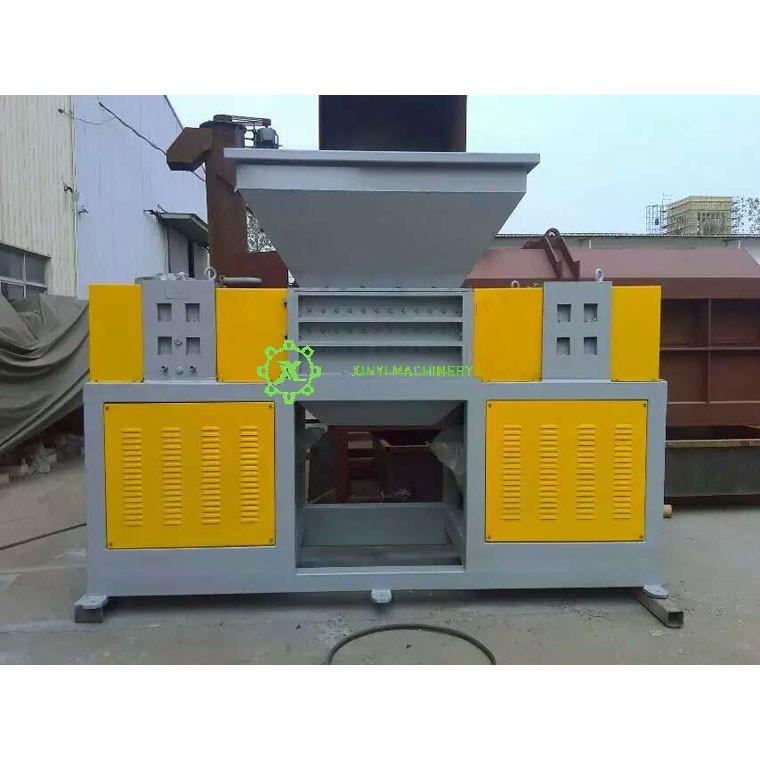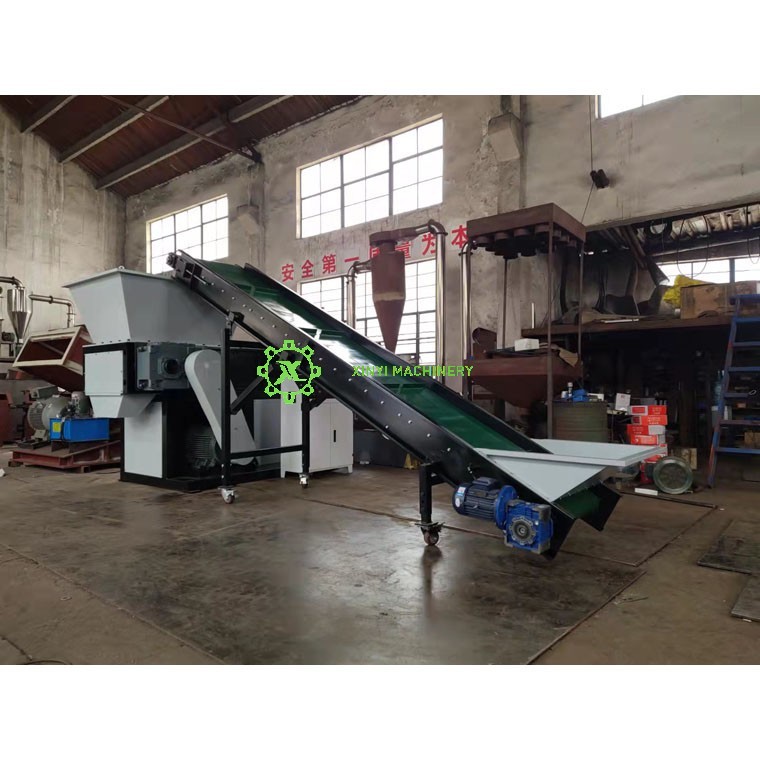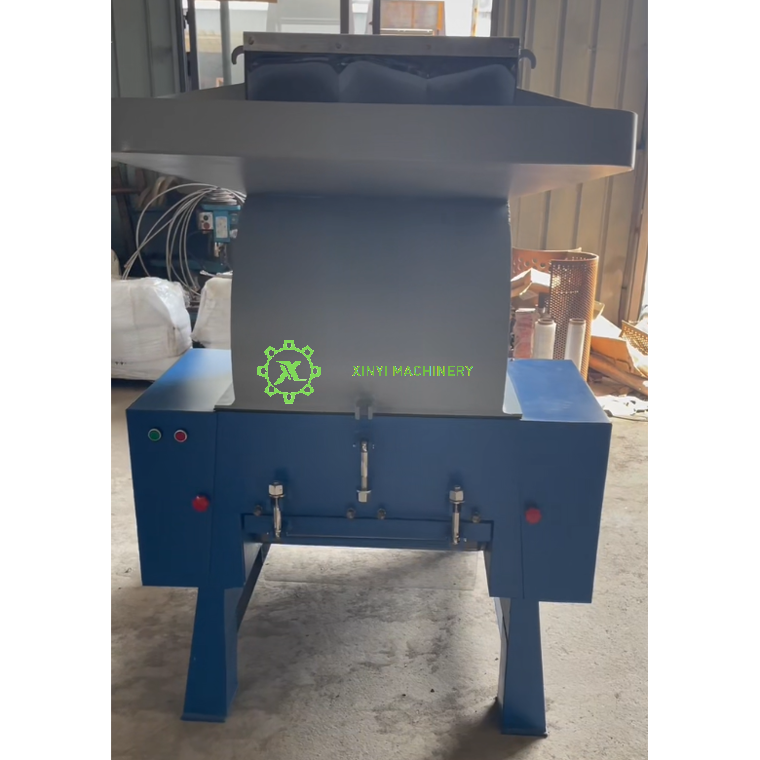
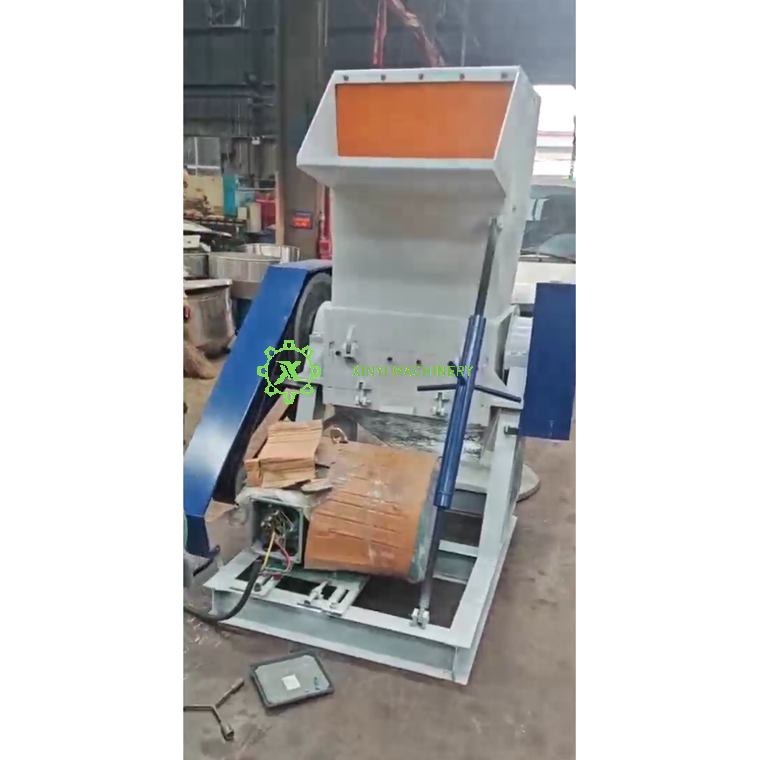
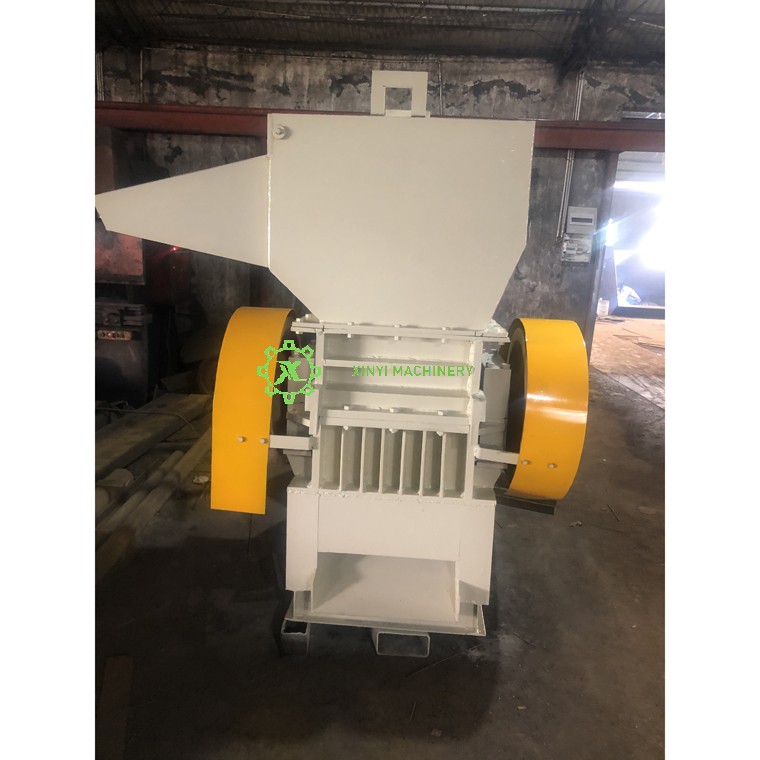
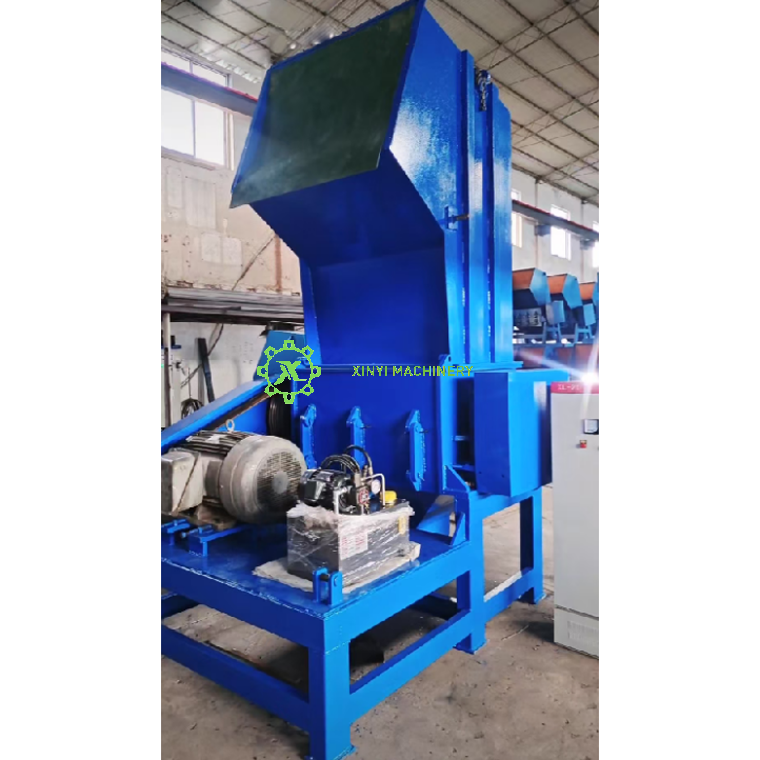
How many HP or KW Do You Need for Your Plastic Crusher Machine/Plastic Crusher? This is one of the most critical factors in selecting the right plastic crusher for an operation. As a leading manufacturer, XINYI MACHINERY can provide a detailed breakdown.
The short answer is: There is no single HP or KW value that fits all applications. The required power depends on several key factors.
A very general range for standard plastic crushers is from 3 HP (2.2 KW) for small, brittle materials up to 200 HP (150 KW) or more for large, central granulators processing tough parts or purgings.
Here is a comprehensive guide to help you determine the right power for your needs.
Key Factors Determining Crusher Power
o Type of Plastic Material (Hard vs. Soft)
o Hard/Brittle Plastics (e.g., ABS, PS, Acrylic, PET): These materials break easily upon impact. They require less torque and power for the same volume compared to soft plastics.
o Soft/Ductile Plastics (e.g., LDPE, HDPE, PP, Film, Fibers): These materials are tough and flexible. They don't break; they need to be cut or torn. This requires significantly more torque and horsepower to prevent the rotor from stalling.
o Size and Shape of the Feed Material
o Small Injection Sprue & Runners: Can be handled by lower HP machines (e.g., 5-10 HP).
o Large Plastic Parts (like bottles, containers, buckets): Require more power to initially break them apart. A larger crushing chamber is also needed.
o Purgings or Thick Wall Sections: These are the most demanding. They require high-torque, high-HP machines (often 30-100+ HP) to chew through the dense material without jamming.
o Desired Output Size (Screen Size)
o Large Flakes (e.g., 15-25mm screen): Less power is required as the cutting chamber doesn't need to work as hard.
o Small Granules (e.g., 3-8mm screen): The material stays in the chamber longer to be cut into finer pieces. This creates more friction and resistance, demanding more power.
o Throughput Capacity (kg/hour)
o This is straightforward: Higher throughput requires more power. A machine designed for 500 kg/hr will need a much larger motor than one for 50 kg/hr.
o Crusher Type & Rotor Design
o Standard Crushers: Typically have an "open rotor" design suitable for most sprues and runners.
o Silent Crushers: Enclosed for noise reduction, often requiring slightly more power.
o Heavy-Duty Crushers/Central Granulators: Feature a staggered, closed-rotor design that provides more cutting points and higher torque, necessitating a high-HP motor.
Practical Power Recommendations by Application
Here is a general table to illustrate common scenarios. These are estimates; always consult with XINYI MACHINERY for an exact recommendation.
Application Scenario | Typical Material | Expected Throughput | Recommended Power Range | Recommended Power Range |
Beside Injection Molding Machine (small) | ABS, PS Sprue | 20-50 kg/hr | 3 - 7.5 HP | 2.2 - 5.5 KW |
Beside Injection Molding Machine (large) | PP, PE Buckets | 100-300 kg/hr | 10 - 30 HP | 7.5 - 22 KW |
Blow Molding Bottles & Containers | HDPE, PET | 200-500 kg/hr | 20 - 50 HP | 15 - 37 KW |
Film & Sheet Recycling (with pre-cutting) | LDPE, PP Film | 150-400 kg/hr | 15 - 40 HP | 11 - 30 KW |
Central Recycling (Purgings, Thick Parts) | Various, Purgings | 500-1000 kg/hr | 50 - 100+ HP | 37 - 75+ KW |
Pipe & Profile Recycling | PVC, UPVC | 300-700 kg/hr | 30 - 80 HP | 22 - 60 KW |
Professional Tips from XINYI MACHINERY
1. Choose Torque over Pure HP: A slower-speed, high-torque motor is often more efficient and less prone to jamming than a high-speed, low-torque motor with the same HP rating. It provides more "crushing force."
2. Consider a Crusher with a "Hopper Loader": This automates feeding and ensures a consistent, manageable flow of material into the crusher, optimizing power usage.
3. Don't Underpower: Using an underpowered crusher for a tough application is the most common mistake. It will lead to frequent jams, motor burnout, and damaged blades, costing more in downtime and repairs than the initial savings.
4. Variable Frequency Drive (VFD): Many modern crushers, including those from XINYI, offer VFDs. This allows you to adjust the rotor speed to match the material, improving efficiency and providing a soft start to reduce stress on the motor.
Conclusion
Selecting the correct horsepower is about matching the machine's power to the material's toughness, the part size, and your production goals.
The best way to determine the exact HP/KW you need is to provide details about your specific application to our technical team at XINYI MACHINERY. Please be ready to share:
· Type of plastic(s) you are crushing.
· Photos or description of the parts/sprue/material.
· Your desired throughput (kg per hour).
· The desired size of the output granules.
With this information, we can recommend the perfect plastic crusher model with the optimal motor power for your efficient and profitable operation.
